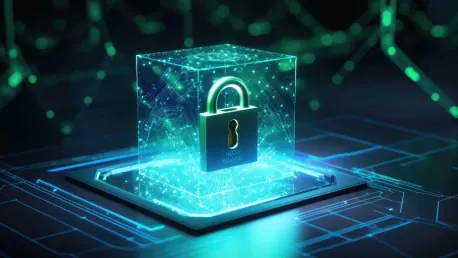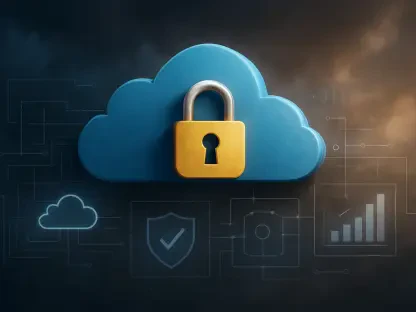The European Union has introduced significant legislative measures that are essential in today’s digital age, aiming at enhancing cybersecurity across diverse sectors. These laws are meticulously designed to focus on robust monitoring preparedness and enhanced cybersecurity governance, offering a structured framework that aids organizations in building resilience against increasingly prevalent cyber threats.
The Importance of Monitoring Preparedness
Effective monitoring preparedness is a crucial element in ensuring organizations can rapidly detect, evaluate, and respond to potential cyber threats. Utilizing continuous monitoring tools such as Security Information and Event Management (SIEM) systems, Intrusion Detection Systems (IDS), and advanced firewalls is fundamental in this regard. These tools enable organizations to continuously oversee their networks, systems, and applications, deploying critical solutions and maintaining logs for real-time incident detection.
Organizations must also uphold their obligations under the Digital Operational Resilience Act (DORA), Cyber Resilience Act (CRA), and NIS2 Directive, ensuring continuous deployment of these monitoring tools. Real-time monitoring solutions play an integral role in promptly detecting and addressing cyber incidents, preventing significant damage and reinforcing systemic resilience.
Early detection of security breaches is critical for modern organizations. The Cyber Resilience Act mandates the implementation of systems for monitoring vulnerabilities and managing patches post-sales. By integrating such systems, organizations can proactively address potential threats. Alongside this, having detailed and documented incident response plans is essential. These response plans should outline specific procedures for threat isolation, thorough investigation, mitigation of damage, and restoration of operations. Regular testing, including drills and penetration tests, is imperative to assess the efficacy of these response plans and monitoring systems.
Governance Framework for Cybersecurity
Cybersecurity governance encompasses a systemic framework of policies, procedures, and controls designed to effectively manage organizational cybersecurity efforts. Compliance with relevant laws and industry standards, such as the Digital Operational Resilience Act and the General Data Protection Regulation, is a fundamental aspect of this governance. Ensuring adherence to such legislation helps in constructing a robust cybersecurity infrastructure and minimizing the risk of regulatory penalties.
Developing and enforcing clear policies for data protection, access controls, and incident response ensures that organizations adopt a strategic approach to managing their cybersecurity landscape. Cyber risk management processes must be integrated into the broader business strategies to maintain a harmonious balance between operational requirements and security imperatives. This holistic integration of cybersecurity measures within the organizational framework ensures long-term resilience and stability in the face of evolving cyber threats.
Leadership and accountability are pivotal in driving effective cybersecurity practices. Clear ownership at the board level ensures that executives and boards are well-informed about cyber risks and incidents, facilitating proactive management of these risks. Regular audits and reviews are crucial for evaluating the effectiveness and adaptability of an organization’s cybersecurity governance processes, ensuring they remain responsive to new threats and regulatory changes.
Managing Third-Party Risks
Managing cybersecurity risks from third-party ICT service providers is a critical aspect of ensuring comprehensive cybersecurity. Organizations must establish robust frameworks for overseeing these risks and ensuring that third-party providers comply with established security standards. Guidelines from frameworks like ISO 27036 and NIST SP 800-161 provide invaluable guidance in mitigating these third-party risks effectively.
Implementing these best practices helps organizations secure their supply chain operations, avoiding potential breaches that can arise due to vulnerabilities in third-party systems. Organizations need to constantly evaluate and monitor their third-party relationships to ensure regulatory compliance and maintain a consistent security posture across the entire supply chain. Doing so will not only prevent direct breaches but also bolster the overall resilience of the organization’s network infrastructure.
Standards and Frameworks’ Benefits
Adopting comprehensive cybersecurity standards provides organizations with structured frameworks, guidelines, and best practices that significantly enhance their security posture. ISO 27001 and the NIST Cybersecurity Framework (CSF) are two prominent examples that help in defining clear roles, responsibilities, and processes for managing cyber risks. These frameworks offer detailed methodologies for implementing, maintaining, and continually improving cybersecurity practices within the organization.
Both frameworks emphasize the need for continuous improvement and iterative assessments of cybersecurity measures. This ongoing evaluation and enhancement process is crucial for adapting to an evolving threat landscape and ensuring that security practices remain effective and relevant. These practices align closely with EU legislative requirements, thus simplifying compliance and making organizational audits and inspections more efficient.
Adhering to recognized standards also helps boost stakeholder trust and confidence, demonstrating a committed effort to ensuring high-level security and data protection. Efficient management of audits and inspections by adhering to such standards further streamlines compliance reviews and fosters operational excellence.
Legislative Interconnectedness
The European Union has enacted critical legislative measures that are indispensable in today’s digital era, with the goal of boosting cybersecurity across various sectors. These laws are carefully formulated to emphasize thorough monitoring readiness and fortified cybersecurity governance. They provide a structured framework that assists organizations in cultivating resilience against the growing number of cyber threats. As cyberattacks become more sophisticated and frequent, the need for comprehensive cybersecurity strategies has never been more urgent. The EU’s legislative actions not only aim to protect sensitive data but also ensure continuity and reliability in digital operations. By mandating higher standards for cybersecurity practices, these measures obligate businesses and public entities to adopt proactive defense mechanisms. This legislative initiative is a significant step toward a more secure digital environment, effectively mitigating risks associated with cyber vulnerabilities and ensuring a safer technological landscape for all sectors involved.









